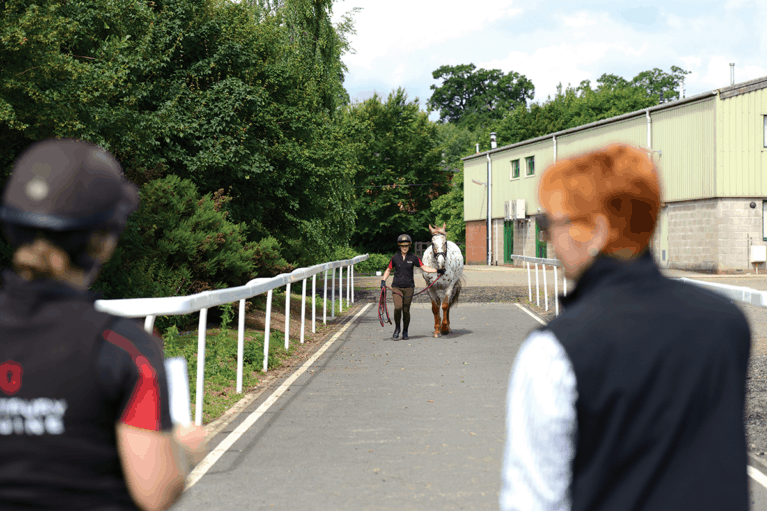The equine therapy industry is booming and it’s one that many horses can benefit from. Horse&Rider goes behind the scenes at Hartpury College Equine Therapy Centre to find out what it’s all about

The equine therapy industry is booming and it’s one that many horses can benefit from. Horse&Rider goes behind the scenes at Hartpury College Equine Therapy Centre to find out what it’s all about
Once the preserve of racehorses and elite sport horses, equine rehab is now available to all and the benefits can be dramatic. As a result, since the turn of the century, interest, research and uptake of equine therapy has increased exploded. With improvements in management practices and diagnostic and surgical techniques, horses are living longer and having longer athletic careers, whether this be as a family pony or an Olympic household name. Because of this, more problems are being picked up and more horses are healing successfully following injury or surgery, which all results in more horses needing therapy or rehabilitation at some point in their life.
In response to the increased demand there have been improvements in availability, too. There are now more courses available, with more students training in a range of equine therapies. In addition to the many mobile equine therapy practitioners, there’s also a number of large therapy centres in the UK with a range of experts and specialist equipment ready to treat your horse under one roof. They often have close links with local vet practices and hospitals, farriers and dentists, along with other professionals, to ensure that every angle is covered.
Why do you need it?
At some point in every horse’s life there will be a time where he’s not moving at his best. A rehab programme allows his musculoskeletal system to be re-educated, so that his body can relearn how to move correctly. There are hundreds of reasons why your horse could benefit from this, including…
- returning to work post-injury – this could include anything from getting cast to a slip in the field or a fall out competing
- returning to work post-surgery
- an unexplained drop in performance – for example, reluctance to go forward or perform a specific movement, favouring one rein, or knocking poles down
- a change in behaviour – for example, loss of interest in work, bucking or girthiness
- a change in gait – for example, irregular striding, toe-dragging or difficulty engaging the hindquarters
- a change in appearance – this could include muscle atrophy or uneven shoe wear
- to maintain his condition – there doesn’t have to be something wrong with your horse for continued assessment and correct work to be of benefit
In most of these situations, your horse will need to see a vet first, as therapy is an addition to, rather than a substitute for, veterinary medical care.
To find out what happens at a therapy centre and how your horse will be assessed, get your copy of January Horse&Rider here, on sale 17 November.















